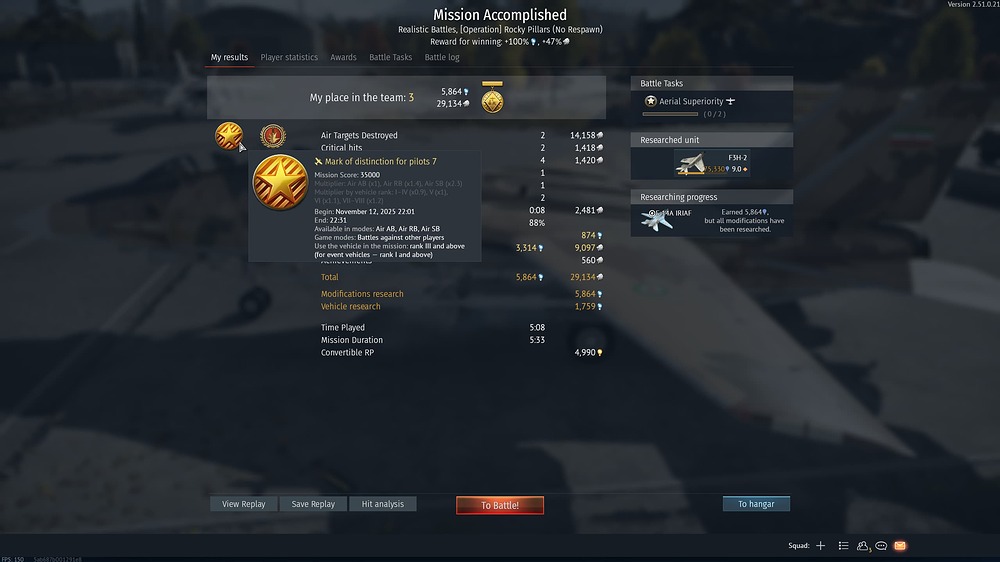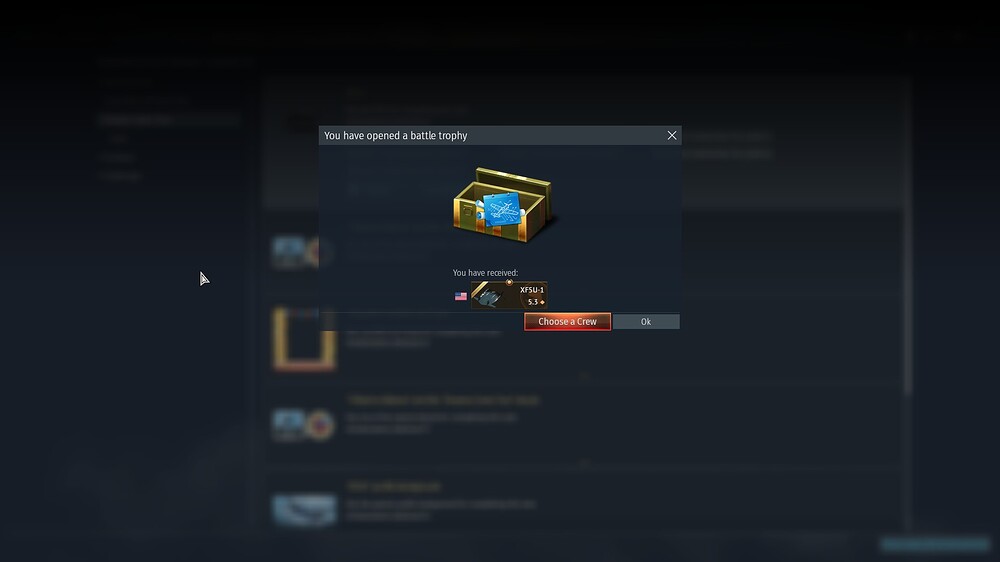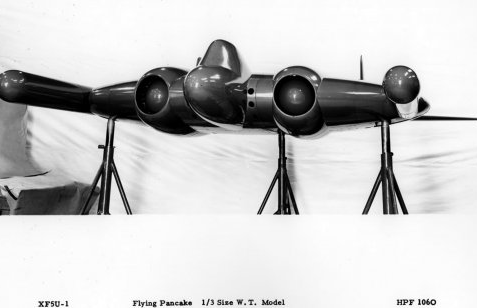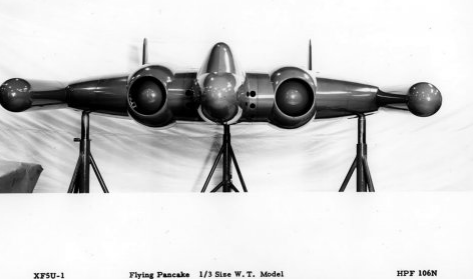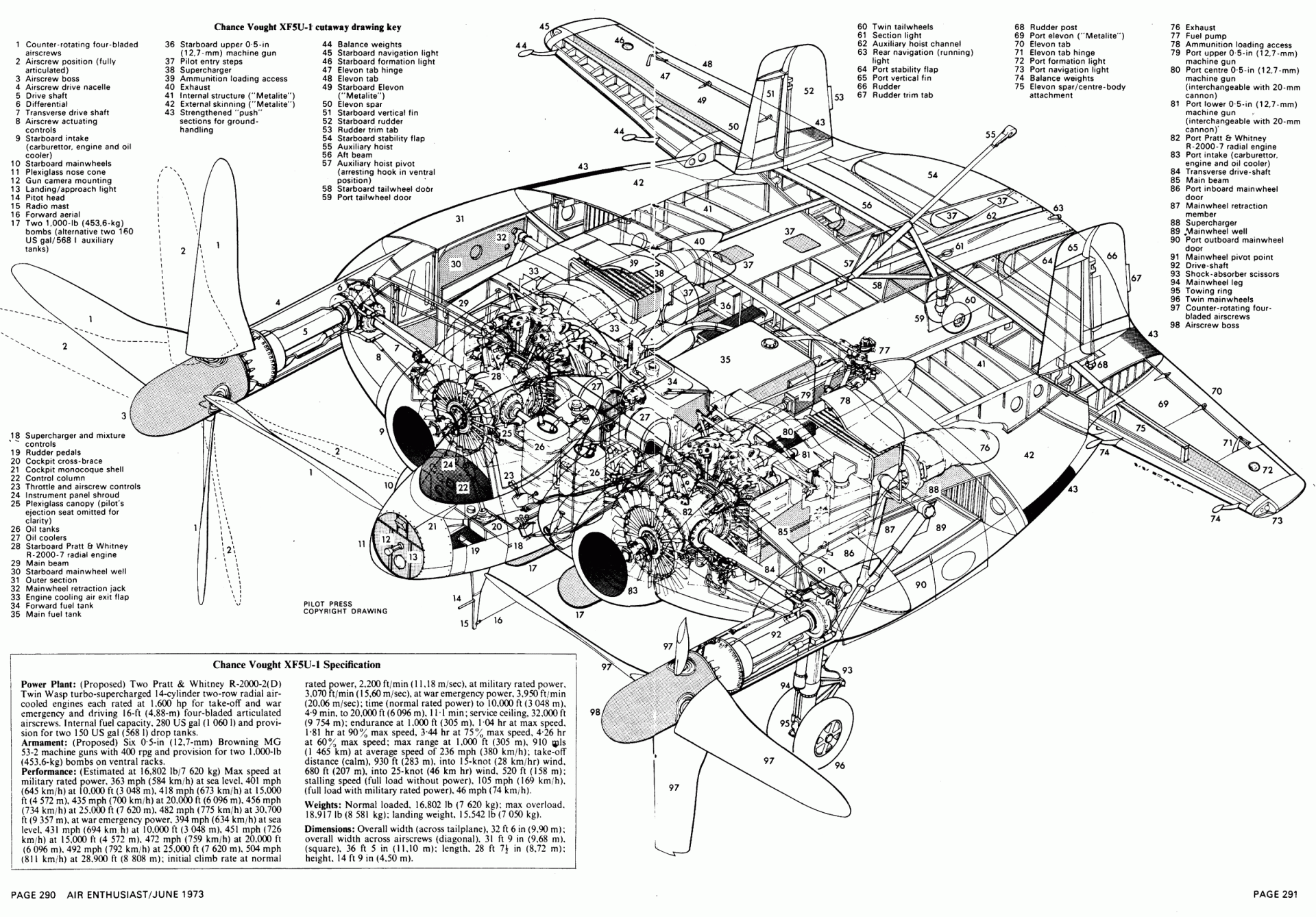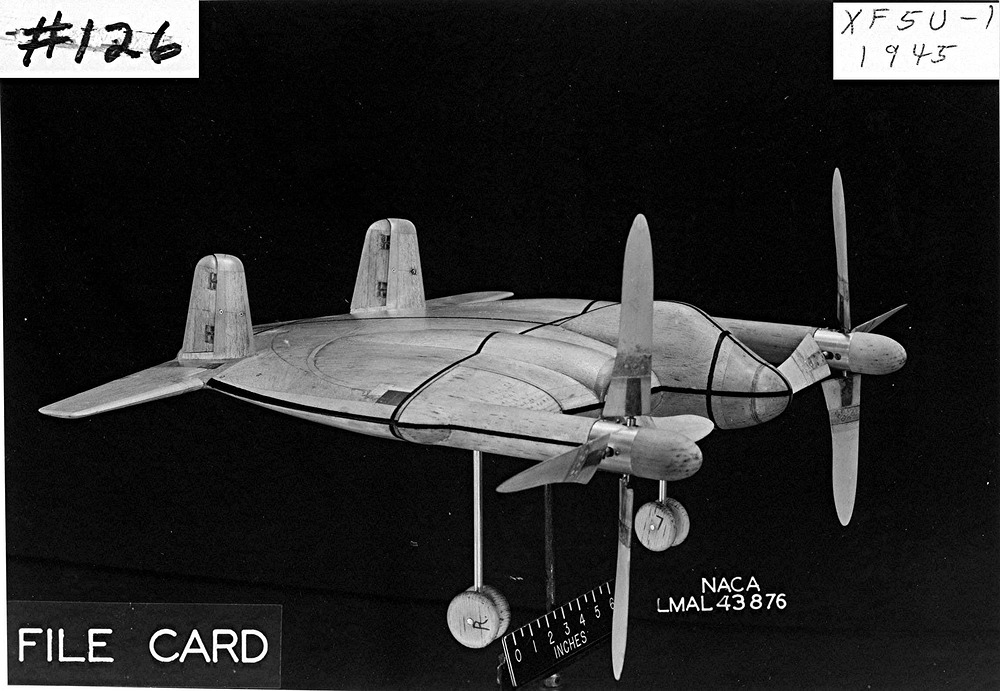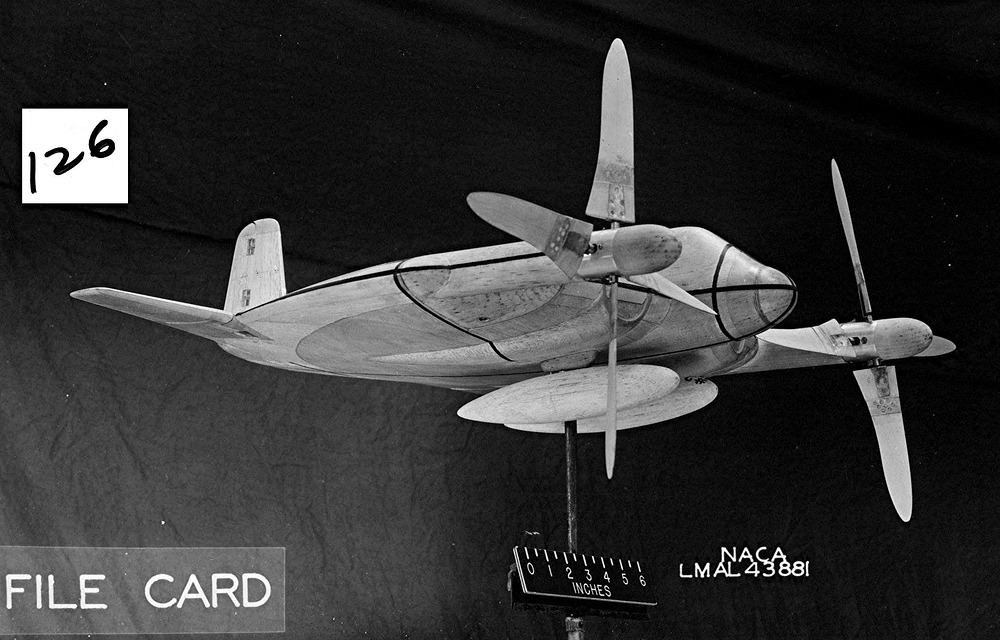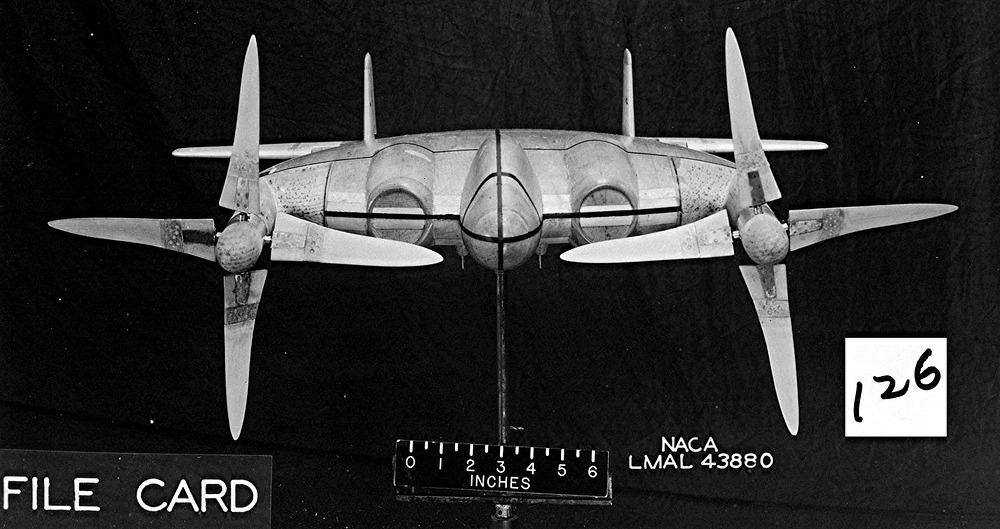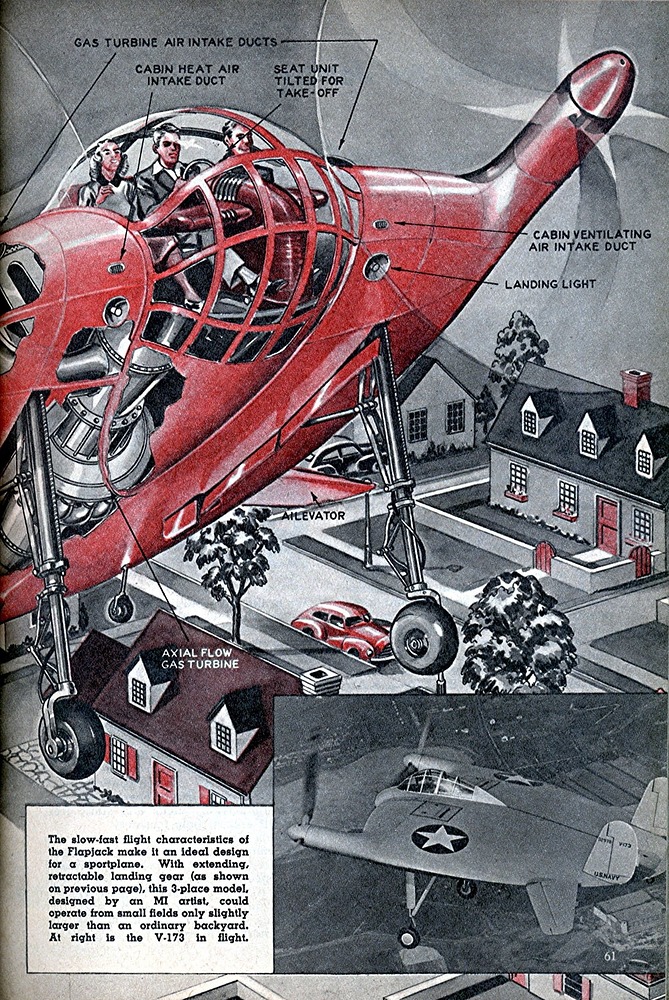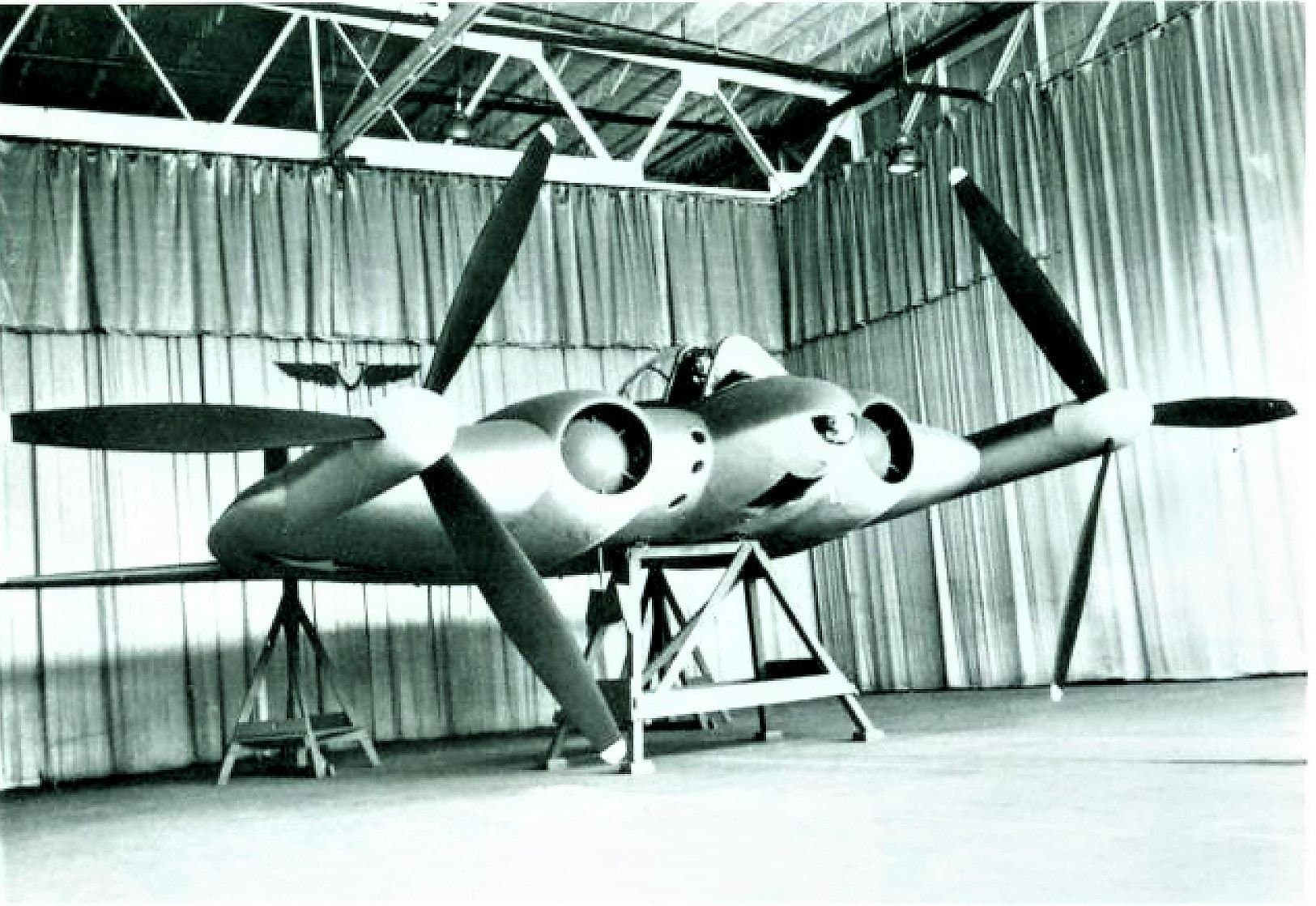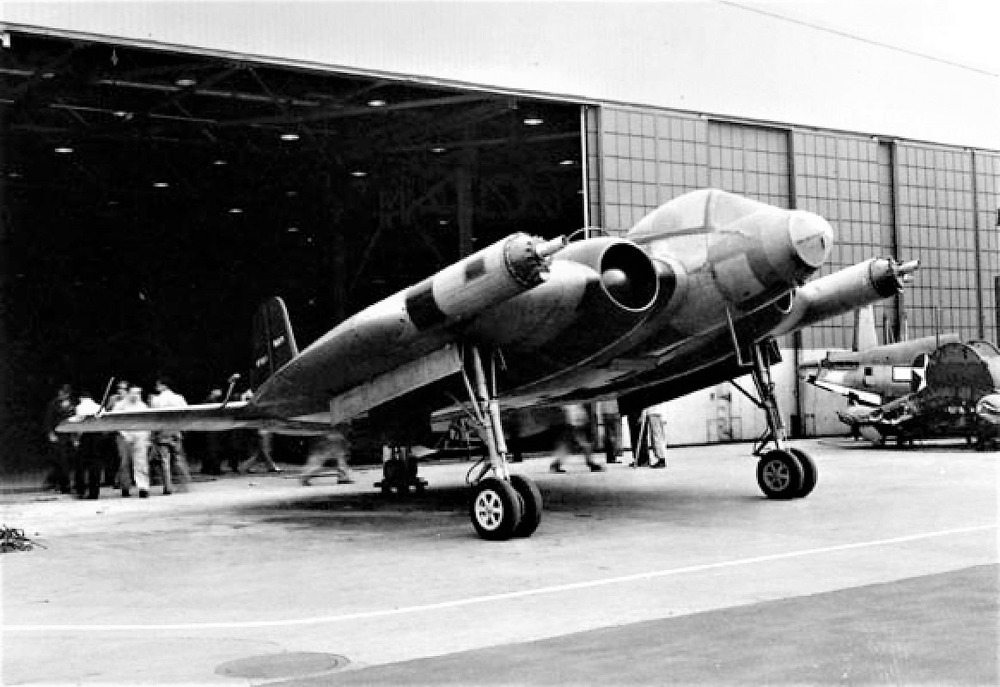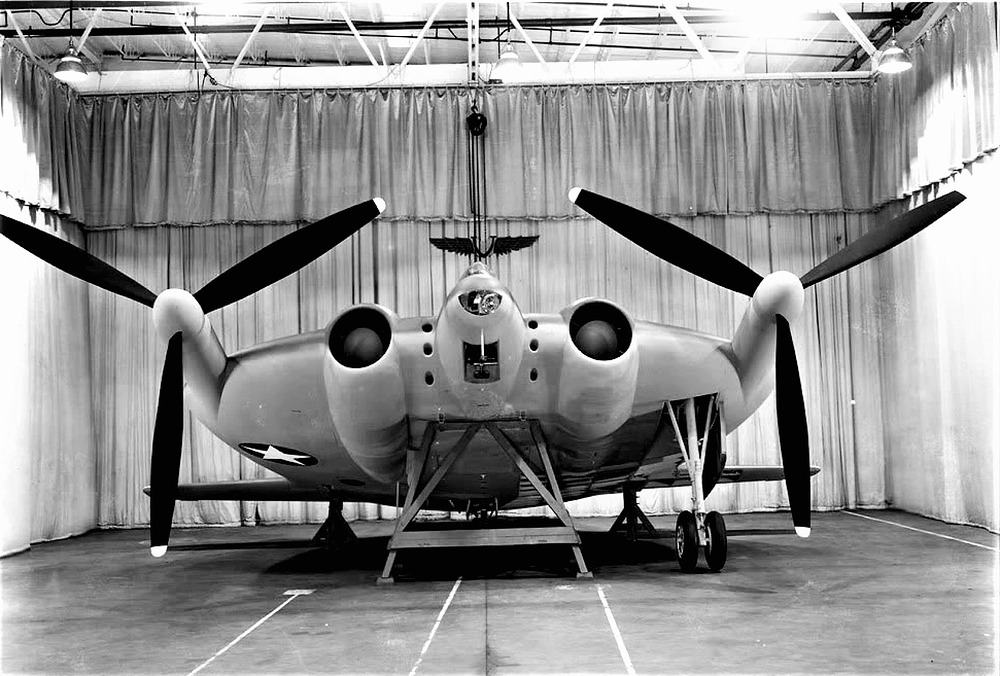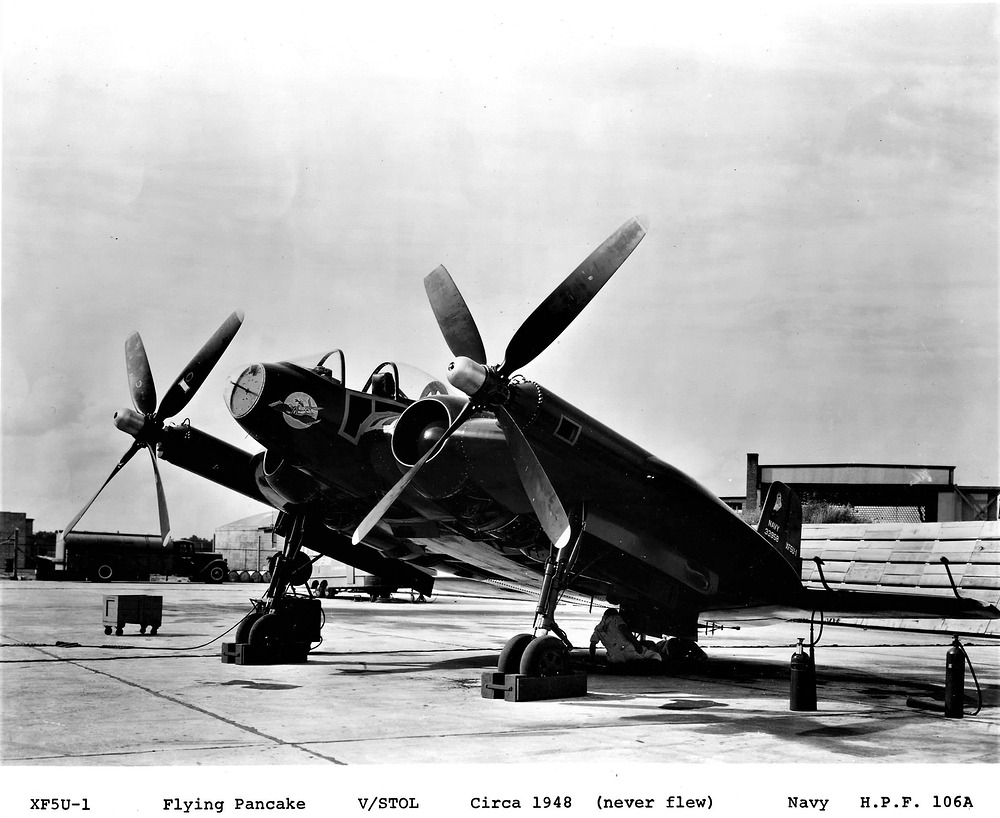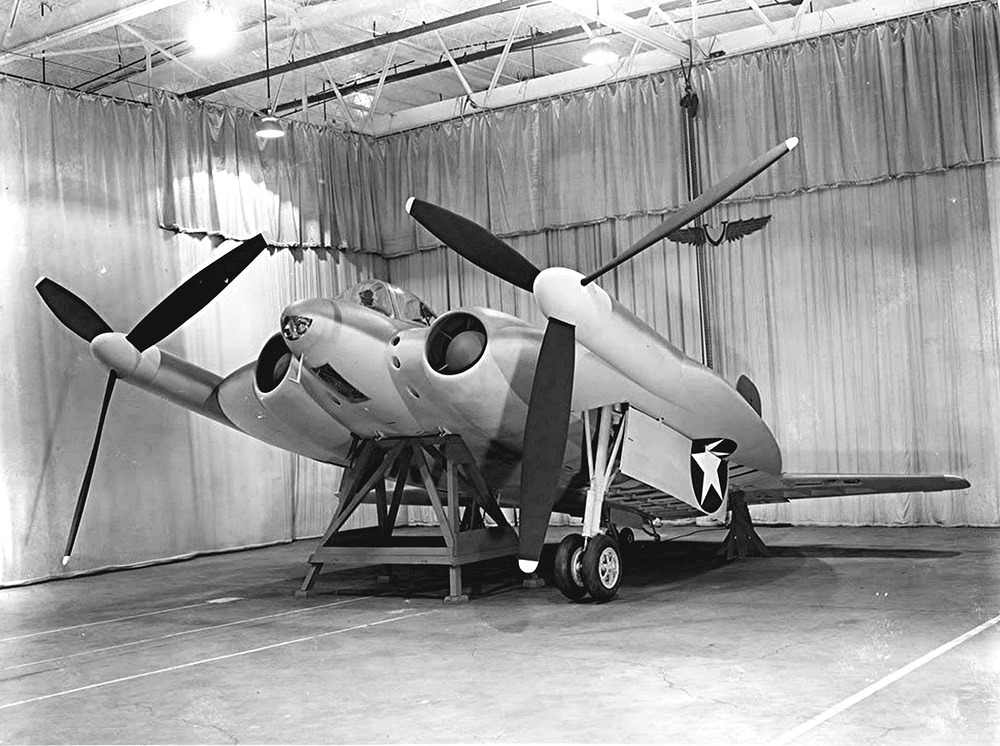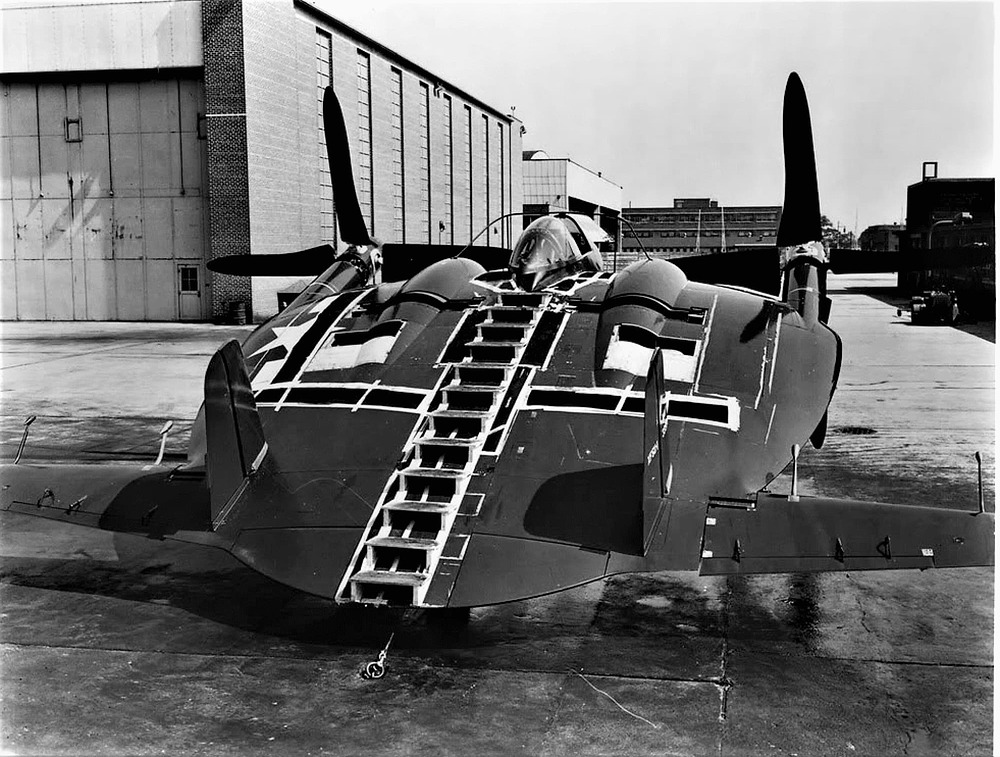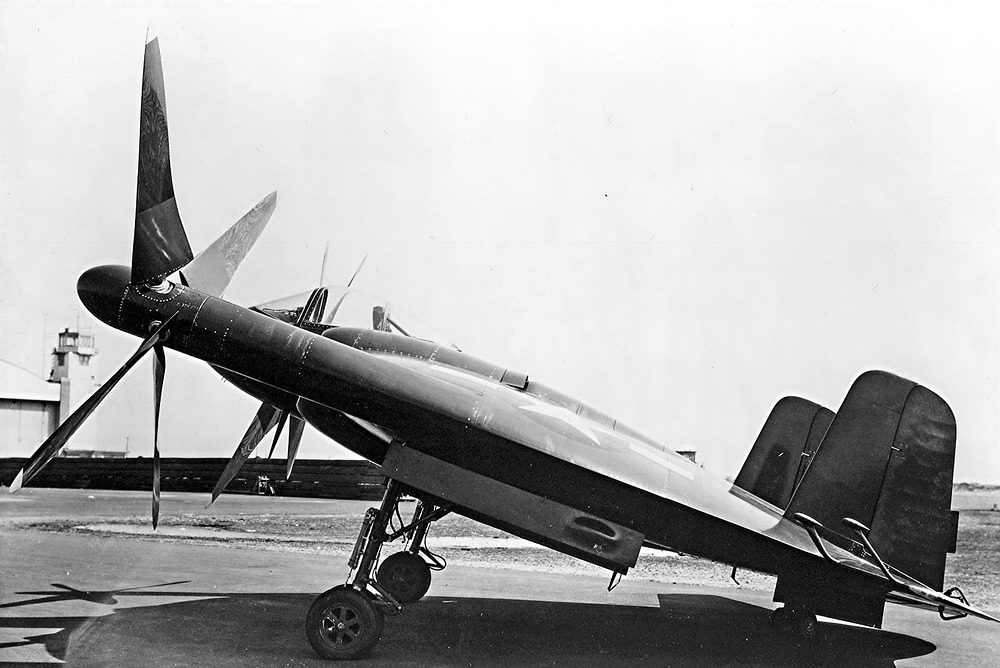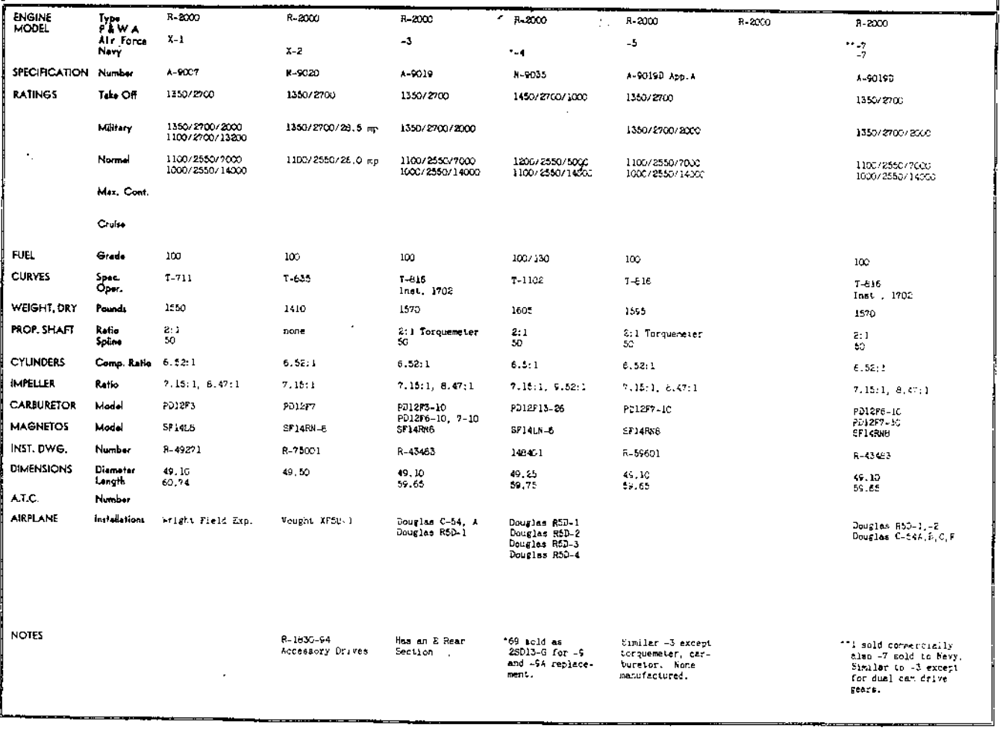I know that your information is incorrect and you are trying to justify such BR for a plane that is worse than P-51C and many more at much lower BRs
Because pathetic pancake climbs 17 m/s at best, have 610 km/h topspeed at deck and will lose in 1v1 to anything, even P-51D-5
It does not have high TWR on normal speeds because you have very weak engines 1350hp(x2) with 7000 kg takeoff mass, your helicopter trick is useless and all that stallfight part is wrong too.
it FLYS worst in the game then the test flight. and so many 109s and yaks are better speeds and 4.0
And so it seems it was a good idea not to overextend my self to do this event.
Unlike another recent hard to master (for me) event aircraft - F106 - this one is already fully spaded, so there would be no real imperative to take it to the battle… LOL
It’s true enough that the position and direction of the forward thrust can change the loading on the rear stabilizer, as can other factors like the flap position on a high wing/ low horizontal stabilizer like a cessna 172, but if on one hand those effects shouldn’t be factors in the values calculated in statshark (assuming it calculates drag and thrust seperately), on the other hand it’s obvious that those effects cannot be applied to the xf5u by design…
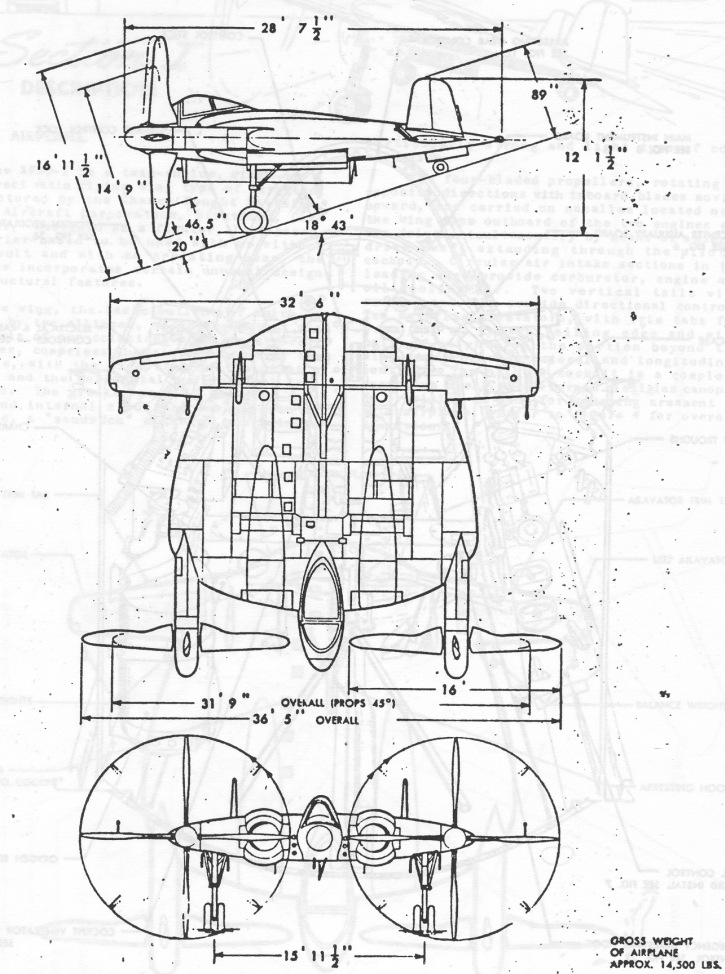
True, I didn’t test for that. I just assumed that pitch response must be what someone on the forums must be talking about. Another interesting feature of it’s flight model is by War Thunders standards a huge adverse yaw. It’s nice to to have to do some legwork, but why is it so much bigger in the XF5U? I’d say it has about the same adverse yaw than a sailplane I fly, the Scleicher Ka 6E (which has the least of the about 12 sailplanes types I’ve flown, the SZD 50-3 Puchacz has about three times more).
This thing has never flown, has it? But we “don’t have enogh sufficient data” to properly model Re.2005 MM.495 VDM, aren’t these exactly double standards?
“XF5U-1 — the flight model has been updated, L/D ratio at high AoA has been increased. Engine performance has been adjusted. (Report ). Gross weight has been reduced relative to early specification (the prototypes had less fuel and no ADI).”
I am finally done with this thing.
FREEDOM.
JUSTICE.
PEACE.
(for my new empire plane)
This took way too long in prop tier SB.
Most of it Bf 109 F-4 (40 kills)
I’m not touching planes for at least 2 weeks. I’m tired.
This is actually a very good way to see how much effort it took to complete the event.
My stats:

It took me 191 Air Realistic battles. Considering I completed all 7 stages, that’s less than 28 battles per star, so about 14 battles per day. That’s quite a lot, but I’m an Arcade player and I don’t play Air Realistic outside of air events. I also focused mainly on spading rank 5 Italian planes, and playing stock vehicles is always a disadvantage.
If someone is interested, here are the planes I played:
Spoiler

Some of these planes I only played to check something (like how much score I can get for quickly diving and destroying a base). So some of these battles took less than 3 minutes. I also never play for stats, so I didn’t care about them.
I can’t even calculate the average battle time, because battles in Air Realistic are so random. Some last 20 minutes, some last 3 minutes, and I didn’t keep track. I don’t play events in Air Arcade because it takes too much effort there.
Considering all of the above, I think it wasn’t that bad for me. But at the same time, it still takes quite a lot of battles to complete just one event.
In my opinion, these events require too much effort.
Having test flown the revamped XF5U-1, the extra power and extra L/D ratio at high angles of attack makes a real difference, in particular it seems that they mostly added lift while keeping drag so now there’s a small chance you can try vertical scissors without pancaking into the ground - although it’s still not recommended. The extra lift also seems to allow the instructor to be more aggressive and pull a bit harder than it used to.
In sim mode, although it’s not as bad as it used to be the plane is still a bit unstable and needs consistent trimming, but overall it’s a lot easier to fly than many other props.
Another interesting feature of it’s flight model is by War Thunders standards a huge adverse yaw. It’s nice to to have to do some legwork, but why is it so much bigger in the XF5U?
Because the XF5U-1 uses elevon (elevators + ailerons) control surfaces, and since the flight model loads up the elevons in cruise flight and has them produce huge amounts of induced drag, loading up the outside elevon while unloading the inside elevon produces a large amount of adverse yaw, even though it hasn’t the same relative wingspan as a glider.
Ima give you my own planelist too since iirc you made statistics posts about stuff earlier.
The ones with black 0 are usually “I joined a lobby, flew around, found nobody/only bombers, got frustrated and left without bothering to land.”
For me, game time for games I actually played were ~60-80 minutes, but there were a lot of games that were join, take off, fly around, get annoyed at not finding anyone to dogfight and leave.
For the long-games, I managed ~
6500 score fighting competent enemies over some 90 minutes. Translated, it’s 6500x0.9x2.3 = 13.4k event progress
Another equally challenging but fun match was 5800 score over 70 minutes. 5800x09x2.3 = 12006
Score earned is very lopsided for both games’ scoreboards.
Lopsided effort at that.
Dogfighting in a propeller plane is not an easy thing in terms of focus and execution. 80 minutes for ~13k event progress is a lot of fun, but I’m spent for the day.
Whereas people can also just afterburner suicide into airfields and make 10k score in 120 minutes with better score multipliers :v.
I wrote about the adverse yaw earlier. I just realised this thing has tailerons and therefore it should have very little, no, or even proverb yaw!
My whole 7 star event (ARB):
- Majority of the ground kills in hunter were light pill boxes. They give good score.
- Would have been quicker if I had more luck with the Fakour-90s this time around.
I wasn’t really counting battles, though. What I usually do is have a goal in mind that doesn’t involve the actual event vehicle. This time around it was to unlock the Australian F-111C. F-14 Iran is only there for when I’m not feeling ARB and just wanna do some low-effort BVR lobs (that may or may not hit).
But yeah, I’ve tried doing events in props before, but I find that jets (especially around 9.7) offer quick gameplay - not much climbing - lots of mindless people rushing to a base ignoring your missile coming for them. It really does lend itself for these events. But I’m a ground player, so that’s just my perspective.
Yup, but sometimes these events give you the motivation you need to even spade them in the first place.
Still, I prefer these events to having the concurrent air - ground - naval events, that were often 40k each. That was life draining.
The change from task-based to score-based events was the biggest issue, at least from my perspective.
I actually created a detailed table of my battles because I wanted to compare the old task-based system with the new score-based system. I did it during the first score-based event.
The results were very surprising. I needed 16 battles with very good performance to complete the first score-based event:
Spoiler
| Kills | Assists | Zones | Deaths | Score | Time played | Place | Result | Activity | SL gained | RP gained | |
|---|---|---|---|---|---|---|---|---|---|---|---|
| Battle 1 | 11 | 3 | 0 | 3 | 3293 | 09:34 | 1 | Lose | 92% | 23026 | 6819 |
| Battle 2 | 13 | 0 | 0 | 2 | 2935 | 13:49 | 1 | Win | 95% | 34130 | 10028 |
| Battle 3 | 9 | 4 | 0 | 0 | 2371 | 08:32 | 1 | Win | 91% | 30260 | 6858 |
| Battle 4 | 14 | 2 | 0 | 0 | 3409 | 09:13 | 1 | Win | 93% | 43421 | 8836 |
| Battle 5 | 6 | 1 | 0 | 1 | 2024 | 07:01 | 2 | Win | 86% | 15072 | 5471 |
| Battle 6 | 11 | 2 | 0 | 3 | 2773 | 08:56 | 1 | Lose | 83% | 18656 | 5224 |
| Battle 7 | 10 | 0 | 0 | 2 | 2622 | 06:30 | 1 | Lose | 91% | 17854 | 6137 |
| Battle 8 | 10 | 2 | 0 | 3 | 2896 | 09:53 | 2 | Win | 93% | 21528 | 1313 |
| Battle 9 | 7 | 2 | 1 | 3 | 2536 | 08:16 | 1 | Lose | 90% | 12188 | 5446 |
| Battle 10 | 11 | 3 | 0 | 2 | 3875 | 09:16 | 1 | Lose | 92% | 27854 | 7224 |
| Battle 11 | 8 | 1 | 0 | 1 | 2001 | 06:38 | 1 | Win | 85% | 15462 | 5506 |
| Battle 12 | 15 | 3 | 0 | 1 | 4061 | 10:14 | 1 | Lose | 94% | 35654 | 8361 |
| Battle 13 | 12 | 0 | 0 | 1 | 2309 | 11:41 | 2 | Win | 93% | 30185 | 8780 |
| Battle 14 | 11 | 4 | 1 | 3 | 3600 | 09:49 | 1 | Lose | 93% | 24413 | 7552 |
| Battle 15 | 8 | 2 | 0 | 2 | 2242 | 12:01 | 2 | Win | 93% | 16924 | 7891 |
| Battle 16 | 7 | 1 | 0 | 2 | 2307 | 09:23 | 3 | Lose | 92% | 13569 | 5411 |
| Total: | 163 | 30 | 2 | 29 | 45254 | 02:30:46 | - | - | - | 380196 | 106857 |
| Average: | 10,19 | 1,88 | 0,13 | 1,81 | 2828 | 09:25 | - | 50% | 91% | 23762 | 6679 |
But just look at that table and compare it to the previous task-based event requirements in Air Arcade:
- Destroy 40 enemies: completed after 4 battles.
- Destroy 12 enemies in a single battle: completed after 2 battles.
- Help allies 12 times to destroy enemy vehicles: completed after 6 battles.
All you needed were three tasks, and even without focusing on them, I would have completed all three within 6 battles. We also had the easy TNT task (destroying bases) and the task requiring a certain number of victories.
A lot of people also forget that the old task-based events could be completed in different game modes. As a result, I often completed the Air tasks just by playing Naval and Ground battles. I usually didn’t even need to play Air battles to get the plane from the event.
From what I remember, my record for completing three tasks in Naval Arcade was 3 battles. When they switched to score-based events, it became impossible to finish events that quickly. In fact, I noted the time I spent completing the stars in the first score-based event, and it was: 2h 20min in Naval Arcade, 3h 50min in Ground Arcade, and 2h 56min in Air Arcade. In total, that’s 9 hours and 6 minutes to get all three stars, and you only had two days to do that. So with such a huge increase in requirements, it makes sense that they eventually had to split the events and stop running them simultaneously. Score-based events just require too much effort. And I’m not even talking about the coupon, where the requirement is even crazier nowadays.
To complete all three stars (Air, Ground, Naval) in the task-based system, I usually needed 3–4 hours of playtime every two days. Now, with score-based events, spending the same amount of time only gives me one vehicle activated on my account (not even a coupon). So for me, the current system is terrible, and I’m really surprised that people like it so much.
Crafting events were a completely separate thing, and they had their own problems. But if you actually want to get the coupon for the vehicle now, you have to play about the same amount of time as in the old crafting events to get two vehicles. The part I didn’t like about crafting events was having to build things - basically clicking a lot for no purpose. And you couldn’t get all the vehicles, while now you can. But even the crafting events required less effort to get one vehicle coupon than the current score-based events.
A lot of players forget that you didn’t have to fully complete the crafting events. Completing them fully originally gave you two vehicles, which was later changed to three vehicles (out of four available). And most players didn’t play Naval anyway, so they weren’t crafting ships in the first place. Many players could also get some GJN (even around 10 GJN when you completed the crafting event fully) by selling the excess parts on the marketplace. You didn’t even have to sell vehicles to get GJN.
I don’t miss the crafting events, they were awfully designed with all this useless building (basically clicking and waiting). But they were still easier to get coupons than the current events.
The last crafting event ever was this:
https://warthunder.com/en/news/8494-event-tokushu-heiki-assemble-and-test-an-honorable-missile-to-obtain-prizes-en
By completing it fully, you could get 3 vehicles out of 4 in 12 days. It required 75k score every day to get three vehicles, and I agree it was crazy amount, but you could do that in any game mode you want (even in Naval Arcade with x1.9 score multiplier or Naval Realistic with x2.2 score multiplier).
To get just one vehicle coupon in crafting events, you needed 25k score per day for 12 days.
Meanwhile, the next event, which is one of the easiest (35k per star, 600k for the coupon):
https://warthunder.com/en/news/9807-event-get-the-r400-in-the-fast-and-dangerous-event-en
Requires 7 stages (14 days, more than crafting events) with an average of almost 43k points per day just to get one vehicle coupon. And you can only do this in Ground modes - you can’t play Naval or Air battles for higher event multipliers.
And sometimes we even get harder events nowadays (45k per star, 750k for the coupon):
https://warthunder.com/en/news/9323-event-get-the-fv40303-in-the-enter-the-serpent-event-en
So yeah, I’m not a fan of the current system. I’ve completely given up on grinding coupons - it takes too much effort nowadays, even more than crafting events, which is ridiculous. I definitely preferred the old task-based events.
I crafted the Object279, among others. I don’t miss those crafting events. But they had some interesting points, like assembling parts and putting stuff together.
Fair enough. I really enjoy the score based system, but I can understand it might not be for everyone. I already get the whole do a bunch of tasks fix from the Battlepass and Special tasks. I like how score is just that. Play the game. As long as it’s the right gamemode and the vehicle counts - go at it how you want.
You see, everyone is different. Personally, I hated that part.
I understand that. I see it differently, because from my perspective these tasks were mostly passive. But obviously, you’re right - a task that requires you to get player kills or assists can’t really be called fully passive, since it requires playing in a specific way. I play everything, so for me it’s not a problem to play a fighter and fight against other players. But many players don’t like this, and for them such a task is not passive at all. They would prefer to bomb ground targets or something similar.
Since I play everything, it doesn’t really matter to me what the task required. So for me, the bigger problem is that it takes 2-3 times longer to complete score-based events than task-based events. From my perspective, that’s a lot of time wasted.
That’s why I think the idea we had a long time ago - to simply combine both systems - would have been the best. The idea was to keep both tasks and score and treat them as two separate objectives. Whichever comes first (completing three tasks or reaching a specific score) would finish the star. Unfortunately, the devs ignored this suggestion on the old forum, which is a shame, because that system would have satisfied everyone. I’m sure a lot of players would have been pleasantly surprised to see that they could complete three tasks much faster than reaching the required score.
To be fair, those tasks are quite fine. It’s Battlepass where we’ve seen some wacky tasks that have had people scratching their heads. Like back in 2021 we had to depth charge stuff to death:
And yeah, that would be ideal. Too bad it wasn’t implemented.
after playing with the pancake i really hope mr snail do 2 things !
1-give it the Two Pratt & Whitney XR-2000-2 turbo-supercharged radials engines !
2- 20mm guns as optional
reason the pancake is really bad and 90% dog fight are lost because the weak engine power !
the pancake used these engines in the second prototype which we have in game !
here more info about the R-2000-2 in the aircraft
Spoiler
By William Pearce
Following the successful wind tunnel tests of the Vought V-173 low-aspect ratio, flying wing aircraft in late 1941, the US Navy asked Vought to propose a fighter built along similar lines. Charles H. Zimmerman had been working on such a design as early as 1940. He and his team at Vought quickly finalized their fighter design for the Navy as VS-315. On 17 September 1942, before the V-173 had flown, the Navy issued a letter of intent for two VS-315 fighters, designated XF5U-1. One aircraft was a static test airframe, and the other aircraft was a flight test article.
Charles Zimmerman’s fighter aircraft from a patent application submitted in 1940. Although the drawing shows fixed horizontal stabilizers (45/50) and skewed ailerons (34/36), the patent also covered the configuration used on the Vought XF5U. Note the prone position of the pilot, and the guns around the cockpit.
The Vought XF5U was comprised of a rigid aluminum airframe covered with Metalite. Metalite was light and strong and formed by a layer of balsa wood bonded between two thin layers of aluminum. The XF5U had the same basic configuration as the V-173 but was much heavier and more complex.
The XF5U’s entire disk-shaped fuselage provided lift. The aircraft had a short wingspan, and large counter-rotating propellers were placed at the wingtips. At the rear of the aircraft were two vertical tails, and between them were two stabilizing flaps. When the aircraft was near the ground, air loads acted on spring-loaded struts to automatically deflect the stabilizing flaps up and allow air to escape from under the aircraft. The stabilizing flaps enhanced aircraft control during landing. On the sides of the XF5U were hydraulically-boosted, all-moving ailavators (combination ailerons and elevators). The ailavators had a straight leading edge, rather than the swept leading edge used on the V-173’s ailavators. Two large balance weights projected forward of each ailavator’s leading edge.
The XF5U mockup was finished in June 1943. Note the gun ports by the cockpit. The mockup had three-blade propellers and single main gear doors, items that differed from what was ultimately used on the prototype. The acrylic panel under the nose was most likely to improve ground visibility, like the glazing on the V-173. However, test pilots reported that the glazing was not useful.
Zimmerman originally proposed a prone position for the pilot, but a conventional seating position was chosen. The pilot was situated just in front of the leading edge and enclosed in a bubble canopy. Some sources state that an ejection seat was to be used, but no mention of one has been found in Vought documents, and an ejection seat does not appear to have been installed in the XF5U-1 prototype. The cockpit was accessed via a series of recessed steps that led up the back of the aircraft. The acrylic nose of the XF5U housed the gun camera and had provisions for landing and approach lights.
The aircraft’s landing gear was fully retractable, including the double-wheeled tailwheel. The main gear had a track of 15 ft 11.5 in (4.9 m). A small hump in the outer gear doors covered the outboard double main gear wheel. The long gear gave the aircraft an 18.7 degree ground angle. A catapult bridle could be attached to the aircraft’s main gear to facilitate catapult-assisted launches from aircraft carriers. For carrier landings, an arresting hook deployed from the XF5U’s upper surface and hung over the rear of the aircraft. Armament for the XF5U consisted of six .50-cal machine guns—three guns stacked on each side of the cockpit—with 400 rpg. The lower four guns were interchangeable with 20 mm cannons, but the proposed rpg for the cannons has not been found. Two hardpoints under the aircraft could each accommodate a 1,000 lb (454 kg) bomb. No armament was installed on the prototype.
The two XF5Us under construction. The left airframe was used for static testing, and the right airframe was the test flight aircraft. The engine cooling fans and oil tanks can be seen on the right airframe.
Originally, the XF5U was to be powered by two 14-cylinder, 1,600 hp (1,193 kW) Pratt & Whitney (P&W) R-2000-2 engines. It appears P&W stopped development of the -2 engine, and the 1,350 hp (1,007 kW) R-2000-7 was substituted sometime in 1945. The engines were buried in the aircraft’s fuselage, and engine-driven cooling fans brought in air through intakes in the aircraft’s leading edge. Cooling air exit flaps were located on the engine nacelles on both the upper and lower fuselage. An exit flap for intercooler air was located farther back on the top side of each nacelle.
Engine power was delivered to the propellers via a complex set of shafts and right angle gear drives. A two-speed gear reduction provided a .403 speed reduction for takeoff and a .177 reduction for cruising and high-speed flight. With the engines operating at 2,700 rpm (1,350 hp / 1,077 kW) at maximum takeoff power, the propellers turned at 1,088 rpm. At maximum cruise with the engines at 2,350 rpm (735 hp / 548 kW), the propellers turned at 416 rpm.
The complex power drive of the XF5U was the aircraft’s downfall. The system was unlikely to work flawlessly, and the Navy chose to use its post-war budget on jet aircraft rather than testing the XF5U. The inset drawing is from Zimmerman’s patent outlining the propeller drive.
A power cross shaft was mounted between the gearboxes on the front of the engines. In the event of an engine failure, the dead engine would be automatically declutched, and the cross shaft would distribute power from the functioning engine to both propellers. The two engines were declutched from the propeller drive at startup. The clutches were hydraulically engaged, and a loss of fluid pressure caused the clutch to disengage. The engines were controlled by a single throttle lever and could not be operated independently (except at startup).
By November 1943, the ongoing flight tests of the V-173 indicated that special articulating (or flapping) propellers would be needed on the XF5U. Propeller articulation was incorporated into the hub by positioning one two-blade pair of propellers in front of the second two-blade pair. The extra room provided the space needed for the 10 degrees of articulation and the linkages for propeller control. As one blade of a pair articulated forward, the opposite blade of the pair moved aft. To relieve the load and minimize vibrations, the propeller hub mechanism caused the blade pitch to decrease as the blade articulated forward and to increase as the blade moved aft. The XF5U’s wide-cord propellers were 16 ft (4.9 m) in diameter, made from Pregwood (plastic-impregnated wood), and built by Vought. The propellers were finished with a black cuff, a woodgrain blade, and a yellow tip. The pitch of the propellers was controlled by a single lever and could not be independently controlled; the set pitch of all blades changed simultaneously. If both engines failed, the propellers would feather automatically. Construction of the special propellers was delayed, and propellers from a F4U-4 Corsair were temporarily fitted to enable ground testing to begin.
The completed XF5U ready for primary engine runs with F4U-4 propellers. The aircraft was completed over a year before the articulating propellers were finished. Had the propellers been ready sooner, it is likely the XF5U would have been transported to Edwards Air Force Base for testing in late 1945.
The XF5U had a wingspan of 23 ft 4 in (7.1 m) but was 32 ft 6 in (9.9 m) wide from ailavator to ailavator and 36 ft 5 in (8.1 m) from propeller tip to propeller tip. Each ailavator had a span of about 8 ft 4 in (2.5 m). The aircraft was 28 ft 7.5 in (8.7 m) long and 14 ft 9 in (4.5 m) tall. The XF5U could take off in 710 ft (216 m) with no headwind and in 300 ft (91 m) with a 35 mph (56 km/h) headwind. The aircraft had a top speed of 425 mph (684 km/h) and a slow flight speed of 40 mph (64 km/h). Initial rate of climb was 3,000 fpm (15.2 m/s) at 175 mph (282 km/h), and the XF5U had a ceiling of 32,000 ft (9,754 m). A single tank located in the middle of the aircraft carried 261 gallons (988 L) of fuel. The internal fuel gave the XF5U a range of 597 miles (961 km), but with two 150-gallon (568-L) drop tanks added to the aircraft’s hardpoints, range increased to 1,152 miles (1,854 km). The XF5U had an empty weight of 14,550 lb (6,600), a normal weight of 16,802 lb (7,621 kg), and a maximum weight of 18,917 lb (8,581 kg).
The XF5U with its special, wide-cord, articulating propellers installed. Note the winged Vought logo on the propellers. The purpose of the bottles under the fuselage is not clear. The aircraft used compressed air for emergency extension of the landing gear and tail hook. Perhaps that system was being tested. Note that the inner main gear doors have been removed.
A wooden mockup of the XF5U was inspected by the Navy in June 1943. At this time, the mockup had narrow, three-blade propellers that were very similar to those used on the V-173. The XF5U’s complex systems and unconventional layout delayed its construction, which was further stagnated by higher priority work during World War II. The aircraft was rolled out on 20 August 1945 with the F4U-4 propellers installed. Some ground runs were undertaken, but more serious tests had to wait until Vought finished the special articulating propellers in late 1946.
The aircraft started taxi tests on 3 February 1947, but concerns over the XF5U’s propeller drive quickly surfaced. Vought’s chief test pilot Boone T. Guyton made at least one small hop into the air, but no serious test flights were attempted. The test pilots and Vought felt that the only suitable place for test flying the radical aircraft with its unproven gearboxes and propellers was at Edwards Air Force Base in California. Given the XF5U’s construction, the aircraft could not be disassembled, and it was too large to be transported over roads. The only option was to ship the XF5U to California via the Panama Canal. Faced with the expensive transportation request, no urgent need for the XF5U, questions about propeller drive reliability, and the emergence of jet aircraft, the Navy cancelled all further XF5U project activity on 17 March 1947.
This side view of the XF5U shows how the propeller blades were staggered. Note the balance weights on the ailavator, the hump on the gear door, and the slightly open engine cooling air exit flap on the upper fuselage. Strangely, the tail markings appear to have been removed from the photo.
With the original 1,600 hp (1,193 kW) P&W R-2000-2 engines, the XF5U had a forecasted top speed of 460 mph (740 km/h) and a slow speed of 20 mph (32 km/h). The aircraft had a 3,590 fpm (18.2 m/s) initial rate of climb and a service ceiling of 34,500 ft (10,516 m). With a fuel load listed at 300 gallons (1,136 L), the aircraft would have a 710-mile (1,143-km) range. To increase the XF5U’s performance and try to keep the program alive, Vought proposed a turbine-powered model to the Navy, designated VS-341 (or V-341). While it is not entirely clear which engine was selected, the engine depicted in a technical drawing closely resembles the 2,200 hp (1,641 kW) General Electric T31 (TG-100) turboprop. The estimated performance of the VS-341 was a top speed of 550 mph (885 km/h) and a slow speed of 0 mph (0 km/h)—figures that would allow the VS-341 to achieve Zimmerman’s dream of a high-speed, vertical takeoff and landing (VTOL) aircraft.
Rear view of the XF5U shows padding taped to the aircraft to protect its Metalite surface. The engine cooling air exit flaps are open. The intercooler doors have been removed, which aided engine cooling during ground runs. Note the tail markings on the aircraft.
The XF5U intended for flight testing (BuNo 33958) was smashed by a wrecking ball shortly after the program was cancelled. The XF5U’s rigid airframe withstood the initial blows, but there was no saving the aircraft; its remains were sold for scrap. At the time, the second XF5U (BuNo 33959) had already been destroyed during static tests.
Zimmerman’s aircraft were given several nicknames during their development: Zimmer’s-Skimmer, Flying Flapjack, and Flying Pancake. It is unfortunate that a radical aircraft so close to flight testing was not actually flown. Zimmerman continued to work on VTOL aircraft for the rest of his career.
To bring the XF5U into the jet age, Vought designed the turbine-powered VS-341. The aircraft had the same basic layout as the XF5U. Note the power cross shaft extending from the gearbox toward the other engine.
Sources:
– Chance Vought V-173 and XF5U-1 Flying Pancakes by Art Schoeni and Steve Ginter (1992)
– Aeroplanes Vought 1917–1977 by Gerard P. Morgan (1978)
– XF5U-1 Preliminary Pilot’s Handbook by Chance Vought Aircraft (30 September 1946)
– XF5U-1 Illustrated Assembly Breakdown by Chance Vought Aircraft (1 January 1945)
– Langley Full-Scale Tunnel Investigation of a 1/3-scale Model of the Chance Vought XF5U-1 Airplane by Roy H. Lange, Bennie W. Cocke Jr., and Anthony J. Proterra (1946)
– “Airplane of Low Aspect Ratio” US patent 2,431,293 by Charles H. Zimmerman (applied 18 December 1940)
– “Single or Multiengined Drive for Plural Airscrews” US patent 2,462,824 by Charles H. Zimmerman (applied 3 November 1944)
– “The Flying Flapjack” by Gilbert Paust Mechanix Illustrated (May 1947)
– sxf5u
– xf5u-1spec
Spoiler
On January 19, 1942 Vought-Sikorsky submitted to the U.S. Navy the VS-315 proposal for a 425 mph STOL fighter. In February, the Navy requested a 1/3 scale wind-tunnel model, the VS-315 receiving the official designation XF5U-1 on September 10, 1942 and the wooden mock-up VS-313 was finished in June 1943.
The projected naval fighter had a lightweight aluminum structure with Metalite/ balsa/aluminum sandwich skin, 20 times as much power that the V-173 and increased top speed/landing speed ratio from a typical 4:1 to 10:1. Using two Pratt & Whitney R-2800-7 radial engines, rated at 1,350 hp. each, was expected a landing speed of 40 mph, a top speed of 425 mph. and a zero-roll take-off with a 25-knot headwind.
Powered by two 1,600 hp. P&W R-2000-2(D) turbo-supercharged engines with water injection, it was expected to reach 20 to 460 mph and 0 to 550 mph using two General Electric T31-GE-3 turboprops with 2,300 shp+600 lbf residual thrust and greater power-to-weight ratio. The proposed turbine-powered model was designated VS-341. With sufficient power, both rotors could generate more lift than weight for vertical take-off and landing operation, just keeping up with the warship forward speed. Powered by two turboprops, the airplane would hover motionless hanging under its rotors like a helicopter.
On July 29, 1948, the President approved construction of five supercarriers, with 68,250-ton displacement and 1,090 ft (330 m) length, able to carry a group of large nuclear bombers, the most effective weapon of the day, and a new type of swept wing fighters of the F-86 class.
The construction of the USS United States (CVA-58) started on April 19, 1949 with an estimated cost of US 189 million, but the USAAF managed to cancel the entire program in favor of the B-36 intercontinental bomber, at the cost of US 5.76 million for each plane.
With this operation, the Strategic Air Command kept its monopoly on nuclear weapons delivery until the approval by the Congress of the new USS Forrestal (CVA-59) in April 1950.
During that time, the US Navy was forced to operate with the Essex and Midway -class carriers, straight wing fighters and Lockheed P2V-3C Neptune medium bombers.
After the failure of the Pirate and trying to keep alive its 15 years of work project, Zimmerman proposed to Vought an increased performance version of the XF5U, (labelled as Jet Skimmer in the specialized literature) powered by two Allison J33-A-23 turbojets, rated at 5,400 lbf with water injection. Those huge centrifugal engines, with 50.5 in (128.3 cm) of diameter could not be installed in any naval fighter in service, but they could be buried into the wing/body of the XF5U.
Doubling the power of the F-80C Shooting Star fighter and flying without the extra drag and weight of rotors and gearing, the new plane might have been a 20 per cent faster than the XF5U, but still inferior to the MiG-15 top speed, because the drag penalty induced by their wingtip vortex.
The Jet Skimmer would have retained some of the STOL of the XF5U capability thanks to the special design of its exceptionally low aspect ratio wing. Fitted with the original landing gear and tail hook equipment it might have been able to operate from any escort carrier, but Vought preferred to continue with the development of the V-346 Cutlass , a decision that the Navy would soon regret after the loss of 78 airplanes in accidents.
pancake images
i really hope gajin look into at least giving it better engines which will make it good naval aircraft !
2x 1600hp engines each is 3200hp ! would make sens for this plane model
the R-7 engines way under powered and cause many issue and the main point of pancake was to be naval fast fighter !
bug report !
https://community.gaijin.net/issues/p/warthunder/i/u7JU2qlP0sGG

these 2 images from bug report Sirchby
also remember
M6A2E1 with extra 50mm armor plate to make balanced and work
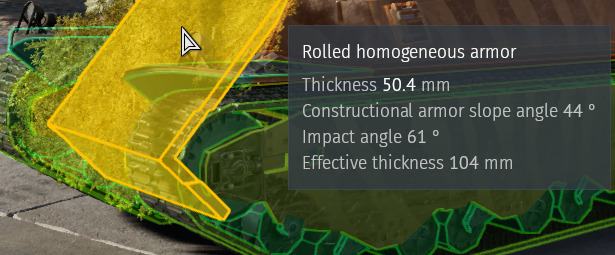
this was never fitted in the tank but snail added to make the tank work !
so i hope same thing with pancake !
It’s baffling to me that Gaijin chose to give an experimental aircraft machine guns it ultimately never mounted, yet refuse to give it the engines it was intended to have. The double standards are truly mind-boggling.
